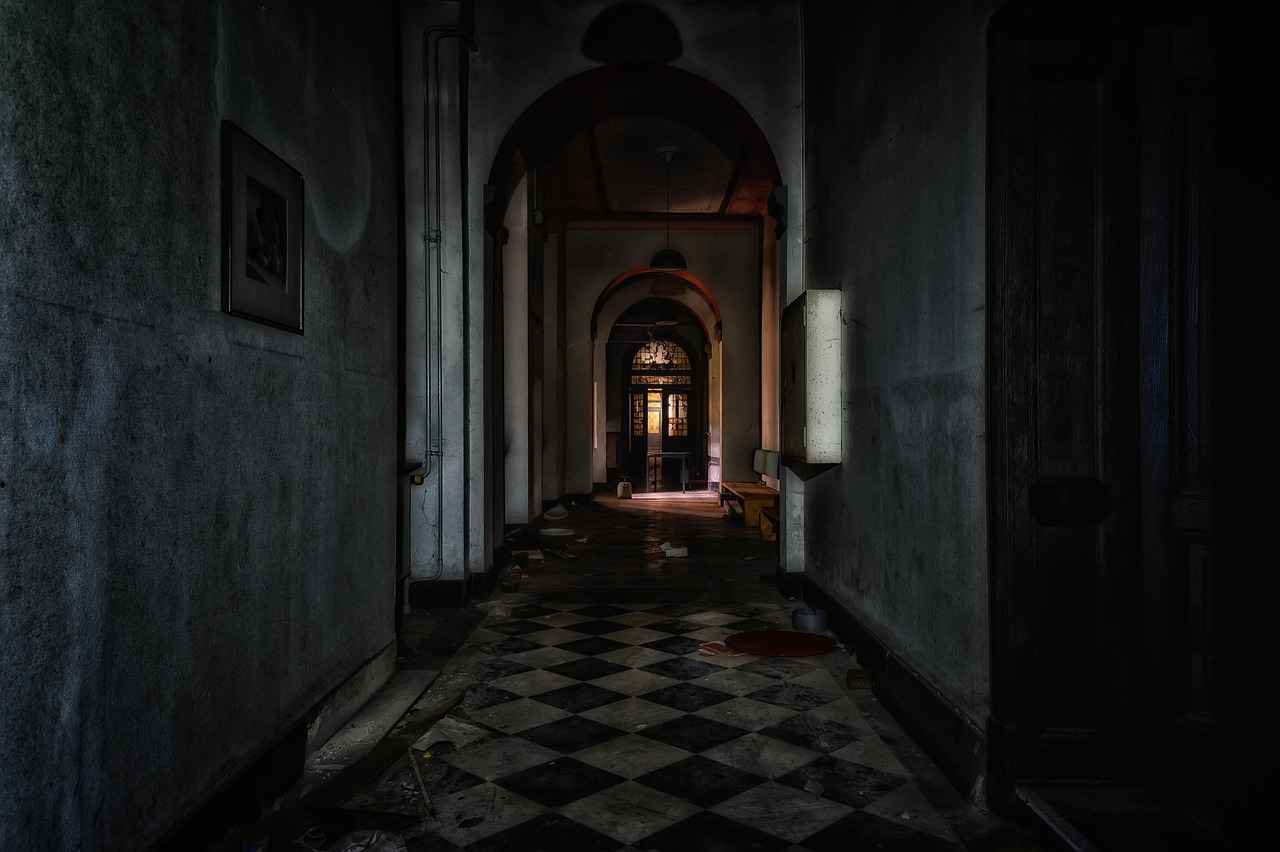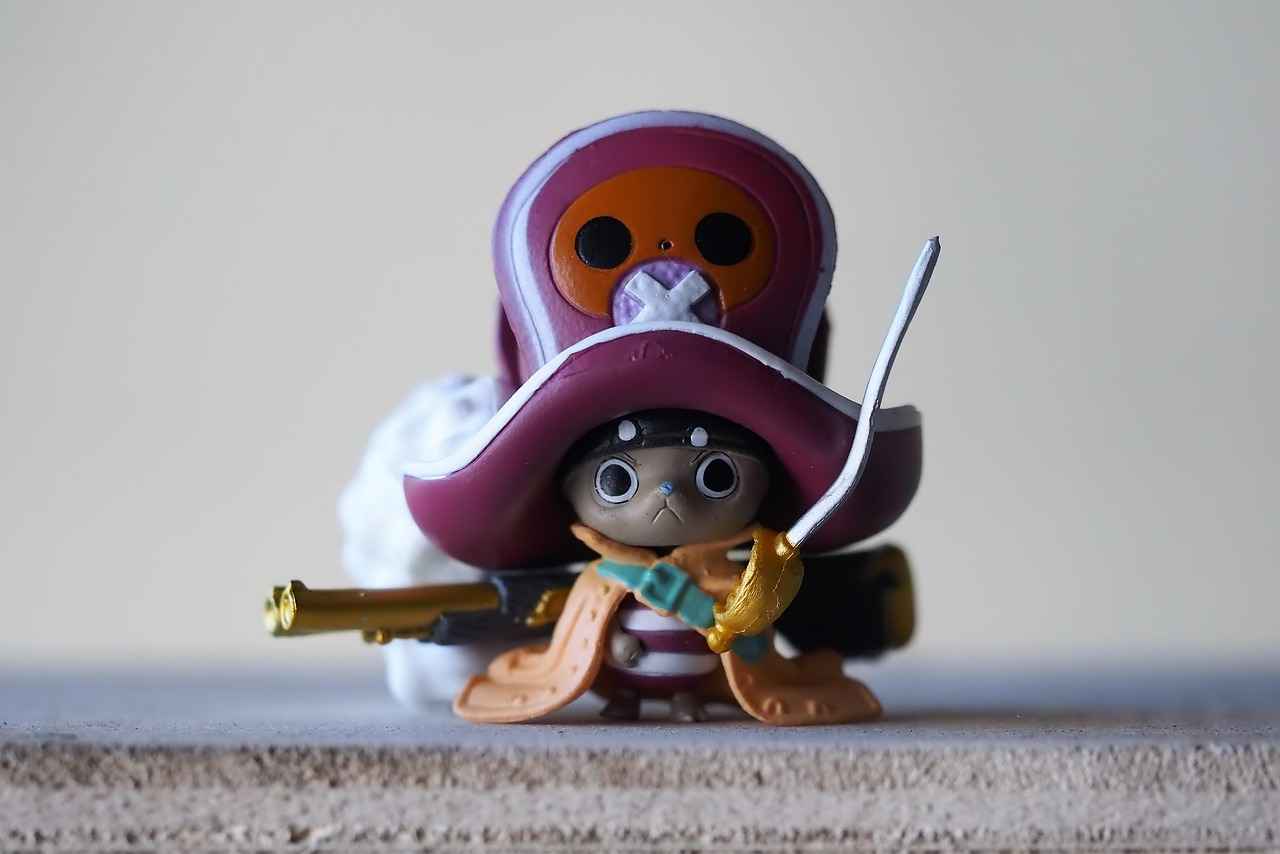This article delves into the psychological unraveling of Keiichi Maebara in Higurashi no Naku Koro ni, examining the intricate themes of horror, suspense, and trauma that shape his character development. Keiichi’s journey is not just a tale of fear; it is a profound exploration of the human psyche under duress.
The Psychological Horror of Higurashi
Higurashi no Naku Koro ni is celebrated for its unique approach to psychological horror. The series intricately weaves tension and dread through Keiichi’s deteriorating mental state, creating an atmosphere that leaves viewers on edge. With each episode, the audience witnesses the gradual decline of Keiichi’s sanity, drawing them deeper into the horror that surrounds him.
Keiichi Maebara: A Character Study
As the protagonist, Keiichi’s mental breakdown is central to the narrative. His character arc is marked by innocence, friendship, and ultimately, despair. Factors such as the oppressive environment of his village and the mysterious happenings around him contribute significantly to his psychological collapse.
Trauma and Its Effects
Trauma is a driving force in Keiichi’s descent into madness. Key events, such as the violent history of the village and his experiences with betrayal, distort his perception of reality. These traumatic experiences shape his reactions and decisions, leading him down a dark path.
Paranoia and Isolation
Keiichi’s increasing paranoia and sense of isolation amplify his mental struggles. As he feels alienated from his friends, his trust erodes, pushing him further into a spiral of fear and suspicion. This isolation not only heightens the horror but also makes his tragic decisions more poignant.
Friendship and Betrayal
The dynamics of friendship play a crucial role in Keiichi’s psyche. Relationships that once provided support turn into sources of anxiety, leading to a profound sense of betrayal. This duality of trust and treachery is a recurring theme that enhances the series’ horror elements.
Symbolism in Keiichi’s Breakdown
Symbolism permeates Higurashi, particularly concerning Keiichi’s mental state. Objects and events serve as metaphors for his fears, illustrating the broader themes of the narrative. Understanding these symbols provides deeper insight into his character’s turmoil.
The Impact of Higurashi on the Horror Genre
Higurashi has significantly influenced the horror genre, particularly in its portrayal of psychological breakdowns. The series redefined expectations for horror narratives, demonstrating that true terror often lies within the mind.
Innovative Storytelling Techniques
The storytelling techniques utilized in Higurashi enhance the viewer’s experience of Keiichi’s psychological turmoil. Non-linear narratives and shifting perspectives keep audiences engaged, making the horror feel immediate and personal.
Legacy of Keiichi’s Character
Keiichi’s character has become iconic in horror. His story resonates with audiences, serving as a reminder of the fragility of the human mind. The impact of his journey continues to echo in contemporary horror, influencing both narratives and character development.

The Psychological Horror of Higurashi
Keiichi’s Mental Breakdown: Why Higurashi’s Horror Shocks You at Every Turn
This article explores the psychological unraveling of Keiichi Maebara in Higurashi no Naku Koro ni, analyzing the themes of horror, suspense, and the impact of trauma on his character development.
Higurashi no Naku Koro ni is renowned for its psychological horror. The series intricately weaves a narrative that emphasizes the fragility of the human mind, particularly through the character of Keiichi Maebara. As the story unfolds, viewers witness the slow disintegration of Keiichi’s mental state, which serves as a chilling reminder of how fear and paranoia can warp reality.
From the onset, Keiichi appears to be a typical high school student, but as sinister events unfold in the village of Hinamizawa, his perception of reality begins to crumble. The series utilizes various techniques to heighten the tension and fear, primarily through atmospheric storytelling and unreliable narration. These elements create an environment where the audience is left questioning what is real and what is a product of Keiichi’s troubled mind.
As Keiichi becomes increasingly isolated, his relationships with friends turn toxic, leading him to doubt their intentions. This paranoia is a key theme in the series, illustrating how trauma can distort one’s view of the world. The psychological horror is not just in the events that transpire, but in the internal struggle that Keiichi faces, making the viewer empathize with his plight.
Moreover, the series cleverly employs symbolism to represent Keiichi’s fears. For instance, the recurring imagery of the rituals in Hinamizawa serves as a metaphor for the inescapable cycle of violence and madness that grips the village, ultimately reflecting Keiichi’s own mental decay.
In summary, Higurashi no Naku Koro ni stands out in the horror genre due to its masterful exploration of psychological themes. The portrayal of Keiichi’s mental breakdown not only captivates the audience but also leaves a lasting impression about the depths of human despair.

Keiichi Maebara: A Character Study
Keiichi Maebara stands out as a pivotal character within the narrative of Higurashi no Naku Koro ni, where his journey reflects profound psychological themes. This article delves into the intricate layers of his character, exploring the factors that contribute to his eventual mental breakdown.
The story begins with Keiichi as a seemingly ordinary boy who relocates to the rural village of Hinamizawa. Initially, he is portrayed as a friendly and sociable character, eager to make friends and enjoy his new surroundings. However, as the plot unfolds, we witness the gradual deterioration of his mental state, which is intricately tied to the events occurring around him.
One of the most significant elements leading to Keiichi’s psychological collapse is the trauma he experiences. The village harbors dark secrets and a history of violence that begins to seep into Keiichi’s consciousness. His encounters with disturbing events and the mysterious behavior of his friends trigger a sense of paranoia, leading him to question the very reality he once trusted.
- Paranoia: As Keiichi becomes increasingly suspicious of those around him, his mind spirals into a state of fear and confusion.
- Isolation: Despite being surrounded by friends, Keiichi feels isolated in his thoughts, further exacerbating his mental struggles.
- Betrayal: The sense of betrayal by those he considered allies plays a crucial role in his descent into madness.
Moreover, the symbolism present in Keiichi’s experiences amplifies the horror of his situation. Objects and events within the narrative often serve as metaphors for his fears, illustrating the depth of his psychological turmoil. For instance, the recurring motifs of blood and death serve to remind him of his fragility and the violence lurking beneath the surface of his seemingly idyllic life.
In conclusion, Keiichi Maebara’s character arc is a compelling exploration of the human psyche under duress. His journey from innocence to madness not only captivates the audience but also serves as a poignant reminder of the impact of trauma and fear on mental health. As we continue to engage with his story, it becomes clear that Keiichi’s struggles resonate with broader themes of trust, friendship, and the fragility of the mind.
Trauma and Its Effects
In the intricate narrative of Higurashi no Naku Koro ni, trauma serves as a crucial catalyst for Keiichi Maebara’s psychological decline. As we delve into the events that shape his reality, we uncover how these experiences distort his perceptions and lead him down a harrowing path.
- Childhood Trauma: Keiichi’s early life is marked by unsettling experiences that lay the groundwork for his later fears. The haunting memories of loss and betrayal create a fragile mental state that is easily shattered.
- Community Secrets: The small village of Hinamizawa holds dark secrets that weigh heavily on Keiichi. As he uncovers the truth, his sense of safety erodes, leading to heightened anxiety and paranoia.
- Isolation: As Keiichi grapples with his traumatic experiences, he increasingly isolates himself from friends and family. This withdrawal exacerbates his mental struggles, making him more vulnerable to his fears.
- Perception Distortion: The trauma Keiichi endures alters his perception of reality. He begins to see friends as potential threats, which spirals into a cycle of distrust and fear.
These elements intertwine to paint a vivid picture of how trauma can warp one’s mind. Keiichi’s descent into madness is not just a narrative device; it is a profound exploration of how trauma can impact an individual’s psyche.
Ultimately, Higurashi uses Keiichi’s traumatic experiences to highlight the fragility of the human mind. It serves as a reminder that the scars of trauma can manifest in unexpected and terrifying ways, leading to a chilling exploration of horror that resonates deeply with audiences.
Paranoia and Isolation
are central themes in the narrative of Higurashi no Naku Koro ni, particularly through the lens of Keiichi Maebara’s character. As the story progresses, Keiichi’s mental state deteriorates, leading him to experience an overwhelming sense of dread and suspicion towards those around him. These feelings are not merely fleeting; they become a significant part of his identity, shaping his actions and decisions in tragic ways.
Initially, Keiichi is portrayed as a lively and sociable boy who enjoys the company of his friends. However, as the plot unfolds, the atmosphere of mistrust begins to seep into his life. This gradual shift is exacerbated by the mysterious events occurring in the village of Hinamizawa, where he begins to suspect that his friends may harbor hidden agendas. The isolation he feels is compounded by his inability to confide in anyone, creating a vicious cycle of paranoia that further alienates him from his peers.
Keiichi’s growing paranoia leads him to misinterpret ordinary situations, viewing them through a lens of fear and suspicion. This misperception is a crucial element of his psychological decline, as it transforms his relationships into battlegrounds of mistrust. The very people he once considered friends become potential threats in his mind, pushing him deeper into a state of isolation.
Ultimately, Keiichi’s mental struggles culminate in tragic decisions that reflect the profound impact of his paranoia and isolation. The narrative effectively illustrates how these feelings can distort reality, leading to catastrophic outcomes. Through Keiichi’s journey, Higurashi masterfully explores the darker facets of the human psyche, making the horror not just about external threats but also about the internal battles that can consume an individual.
This exploration of serves as a poignant reminder of the fragility of the human mind and the devastating consequences that can arise when trust erodes and fear takes hold.
Friendship and Betrayal
play crucial roles in shaping Keiichi Maebara’s psyche throughout the series Higurashi no Naku Koro ni. These dynamics are not merely background elements; they are pivotal to understanding the horror that unfolds. As Keiichi navigates his relationships with friends and the ensuing betrayals, we witness a profound transformation in his mental state.
Initially, Keiichi is portrayed as a typical adolescent, eager to forge connections in his new village. However, the fragility of friendship becomes evident as he grapples with the fear of betrayal. His relationships, particularly with his close friends, are characterized by moments of joy intertwined with suspicion. This tension escalates as he becomes increasingly paranoid about the intentions of those around him.
As the narrative progresses, the impact of betrayal becomes more pronounced. Keiichi’s trust in his friends is shattered by revelations that cast doubt on their loyalty. This betrayal is not merely emotional; it triggers a cascade of psychological effects that push Keiichi toward madness. The horror elements of the series are amplified by his descent into paranoia, as he begins to perceive threats in every interaction.
| Key Themes | Description |
|---|---|
| Trust | Keiichi’s initial trust in his friends is a double-edged sword, setting the stage for his eventual betrayal. |
| Isolation | As he becomes more suspicious, Keiichi isolates himself, further deepening his psychological struggles. |
| Fear | The fear of betrayal manifests as a haunting presence, driving Keiichi to question the motives of those he once considered allies. |
Ultimately, the interplay of friendship and betrayal in Keiichi’s life serves as a powerful narrative device, illuminating the darker aspects of human relationships. This exploration not only contributes to the horror elements of the series but also offers a poignant commentary on the complexities of trust and the fragility of human connections.
Symbolism in Keiichi’s Breakdown
In the intricate world of Higurashi no Naku Koro ni, the symbolism woven into Keiichi Maebara’s psychological decline serves as a powerful narrative device that deepens the horror experience. This breakdown not only reflects his internal struggles but also highlights the overarching themes of fear, mistrust, and the fragility of the human psyche.
One of the most prominent symbols is the mysterious village itself. The idyllic facade of Hinamizawa contrasts sharply with the dark secrets lurking beneath its surface. This duality mirrors Keiichi’s own mental state, as he grapples with the conflict between his perception of reality and the horrors that unfold around him.
- The Doll: Representing innocence, the doll Keiichi encounters becomes a haunting reminder of lost childhood and the inevitability of betrayal. It embodies his fears of losing those he loves.
- The Red and Blue Colors: The recurring use of red signifies violence and bloodshed, while blue often represents the calm before the storm. These colors enhance the emotional weight of Keiichi’s experiences.
- Mirrors: Mirrors in the series symbolize self-reflection and the distortion of reality. Keiichi’s encounters with mirrors highlight his fractured identity and the struggle to confront his inner demons.
Furthermore, Keiichi’s relationships with his friends are laden with symbolic meaning. The bonds he forms initially provide comfort, but as paranoia sets in, these connections become twisted, representing his fear of betrayal. The sense of isolation that follows illustrates how quickly trust can erode under pressure, leading to tragic consequences.
Ultimately, the symbolism in Keiichi’s breakdown not only serves to illustrate his fears but also invites the audience to reflect on broader themes of trust, trauma, and the human condition. As viewers navigate through his harrowing journey, they are compelled to confront their own perceptions of reality and the complex nature of relationships.

The Impact of Higurashi on Horror Genre
Higurashi no Naku Koro ni has undeniably transformed the landscape of the horror genre, particularly in the realm of psychological horror. This anime and visual novel series has become a benchmark for how horror can delve deep into the human psyche, exploring themes of madness, paranoia, and the fragility of trust. By focusing on the mental breakdown of its protagonist, Keiichi Maebara, Higurashi offers a chilling portrayal of how trauma can distort reality.
Influence on Psychological Horror
One of the most significant contributions of Higurashi to the horror genre is its intricate exploration of mental health issues. The series does not shy away from depicting the psychological effects of trauma and isolation. Keiichi’s descent into madness is not just a plot device; it serves as a commentary on the impact of trauma on individuals. This portrayal invites viewers to empathize with characters who experience profound psychological distress, making the horror feel more personal and relatable.
Innovative Narrative Techniques
Higurashi employs innovative storytelling techniques, such as the use of multiple timelines and unreliable narrators, which keep the audience on edge. These elements create a sense of uncertainty that mirrors Keiichi’s own deteriorating mental state. The narrative structure forces viewers to question what is real and what is a product of Keiichi’s troubled mind, enhancing the horror experience.
Legacy in the Horror Genre
The legacy of Higurashi extends beyond its immediate impact; it has paved the way for other works in the genre to explore similar themes. The series has influenced countless creators to delve into the psychological aspects of horror, emphasizing that true fear often lies within the human mind. As such, Higurashi remains a vital reference point for understanding the evolution of psychological horror in modern storytelling.
Conclusion
In summary, Higurashi no Naku Koro ni has left an indelible mark on the horror genre by highlighting the profound effects of trauma and mental illness. Its innovative narrative techniques and deep character studies continue to resonate with audiences, ensuring its place in the pantheon of psychological horror.
Innovative Storytelling Techniques
The storytelling techniques employed in Higurashi no Naku Koro ni are nothing short of revolutionary, particularly in the realm of horror narratives. By intertwining elements of psychological tension and non-linear storytelling, the series captivates viewers and immerses them in Keiichi Maebara’s harrowing psychological journey.
One of the most striking aspects of Higurashi’s storytelling is its use of multiple perspectives. Each arc presents events from different characters’ viewpoints, allowing audiences to experience the same situation through varied lenses. This technique not only enhances the feeling of uncertainty but also deepens the viewer’s understanding of Keiichi’s mental state as they witness his interactions with friends and foes alike.
Additionally, the series employs a unique structure that plays with time loops and repetition. By revisiting pivotal moments with slight variations, Higurashi intensifies the sense of dread and confusion. This method effectively mirrors Keiichi’s own spiraling thoughts, as he grapples with the same fears and scenarios repeatedly, leading to a profound sense of inevitability and despair.
Moreover, the use of visual and auditory cues significantly amplifies the horror elements. The series strategically incorporates dissonant sounds and unsettling imagery to evoke feelings of fear and anxiety. These sensory details draw viewers deeper into Keiichi’s psyche, making his emotional turmoil all the more palpable.
In conclusion, the innovative storytelling techniques in Higurashi not only redefine horror narratives but also provide a rich, immersive experience for the audience. By focusing on psychological depth and employing non-linear storytelling, the series masterfully enhances the emotional impact of Keiichi’s psychological struggles, leaving a lasting impression on viewers.
Legacy of Keiichi’s Character
Keiichi Maebara, a pivotal figure in the Higurashi no Naku Koro ni series, has carved a niche for himself in the realm of horror. His character’s journey through psychological turmoil and despair has left a profound impact on audiences, making him an enduring symbol of the genre. This section delves into the legacy that Keiichi leaves behind, examining how his story continues to resonate with fans and influence the horror landscape.
One of the most significant aspects of Keiichi’s legacy is his complexity. Unlike typical horror protagonists, Keiichi embodies the struggle between sanity and madness, allowing viewers to empathize with his plight. His descent into paranoia and despair reflects the human condition, making his experiences relatable. This relatability is a key factor in why audiences are drawn to his character, as they see their own fears and vulnerabilities mirrored in his journey.
Moreover, Keiichi’s story serves as a cautionary tale about the effects of trauma and isolation. His experiences highlight how unresolved issues can spiral into devastating mental health crises. This theme resonates deeply in today’s society, where discussions around mental health are increasingly vital. As such, Keiichi’s character has become a symbol of the importance of addressing psychological well-being.
Additionally, Keiichi’s interactions with other characters emphasize the themes of trust and betrayal, which are central to the narrative. These dynamics not only amplify the horror elements but also contribute to the emotional weight of his story. The intricate relationships he navigates leave a lasting impression, prompting viewers to reflect on their own connections with others.
In conclusion, Keiichi Maebara’s legacy in horror is multifaceted. His character embodies the struggles of humanity against the backdrop of psychological horror, making him a timeless figure in the genre. As audiences continue to engage with his story, Keiichi’s impact remains significant, ensuring that he will be remembered as an iconic character in horror history.
